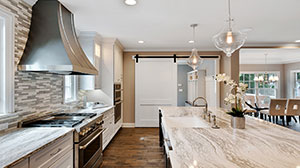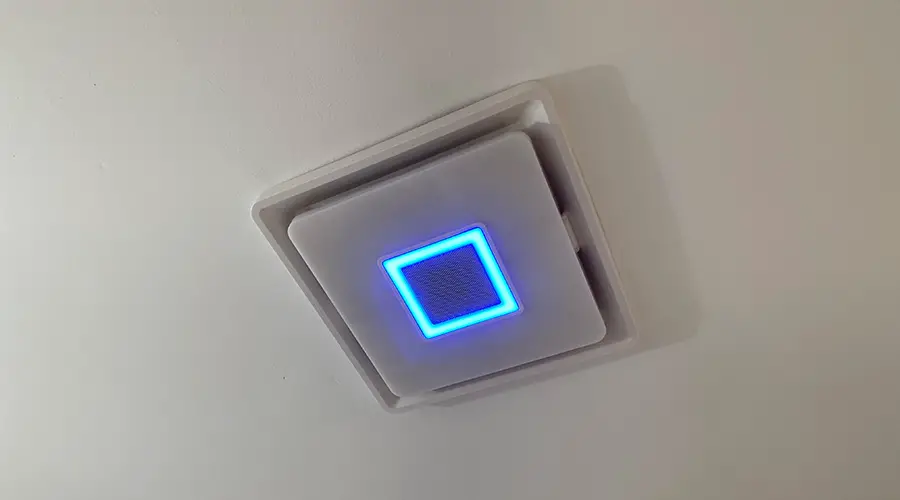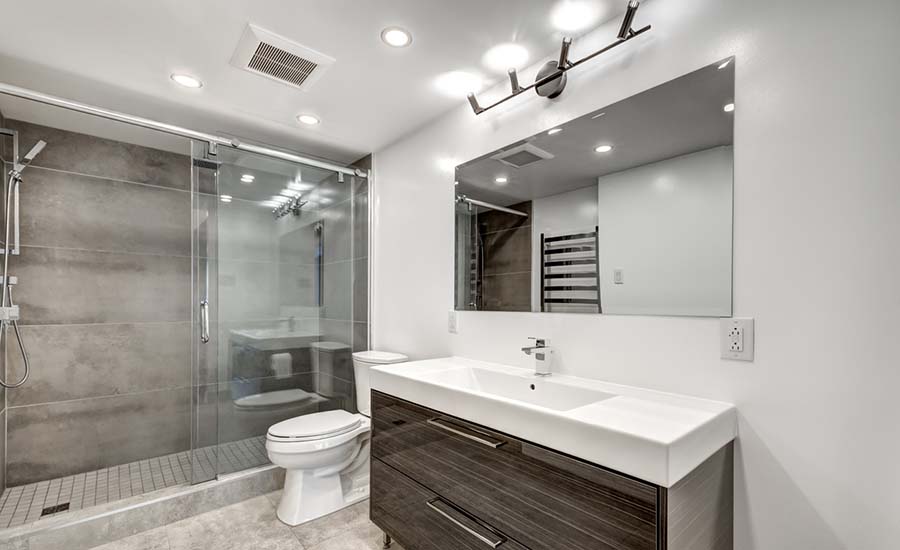
Few people give more than a few seconds of half-hearted thought to the attic. Your attic is a crucial part of a house – it can completely ruin your home’s structure and significantly increase the monthly bills you pay, depending on how its attic heat is regulated – or, more accurately, not.
Attic temperature is one of the most underrated things in house care. Thus, we’ll discuss it in today’s article for that reason. What average temperature should an attic space be?
Attic temperatures should be as close to outdoor temperatures as possible. The attic temperature should be 10-20 degrees warmer than the outside temperature in the summer. Attic temperatures over 130 degrees Fahrenheit can cause prematurely age the shingles, overwork HVAC systems, and cause high energy bills.
A thermal radiant barrier system is usually required to achieve an attic temperature of 130 degrees or less on the hottest summer days. A proper thermal radiant barrier system can drastically reduce attic heat and offer energy savings of 17% to 25%.
Homes in cold climates that experience snow-covered roofs ensure your home is air-tight and energy-efficient to minimize heat loss from the interior space. Insulation in cold areas should be R60 loose-fill blown insulation to fill air gaps in the attic. Attic insulation requirements in warmer climates are a minimum of R30. Some climate zones will vary between R30 and R60.
What Temperature Should the Attic Be?
Maintaining attic temperature isn’t always the easiest thing, but keeping your house and your energy bills in place is an absolute must. A couple of steps to achieve this: start taking better care of your attic.
As we answered earlier, when it’s hot outside (70 degrees or warmer), you should make sure your attic temp doesn’t go above the outside temperature by more than 10-20 degrees, with a maximum of 130 degrees. Hot attics cause many problems, which we’ll discuss later on. Just remember your attic temperature should match the outdoor temperature closely.
Attics are often looked at as the most unnecessary part of a house. It’s used as “an old warehouse,” You throw in things you might need in the future (but never actually use again). If this is the case, this article is for you; we will help you realize how important the attic is.
Looking at fundamental physics, you’ll see that hot air rises while cold air is pressed downwards. Once you understand this, you can see your attic’s implications when keeping your house in order.
How Hot Should My Attic Be During the Summer?
If the temperature is hot outside, your attic will be the hottest part of the house. Hot air becomes trapped between the attic insulation and the roof without proper ventilation. Ideally, your attic should not exceed 130 degrees Fahrenheit during the summer. Problems related to attics hotter than 130 degrees:
- It will make it harder to cool your home in the summer. Your HVAC system has to work harder than needed, which leads to premature equipment failure.
- It can degrade certain types of attic insulation. Insulation, such as cellulose, is made from recycled materials that degrade over time, reducing the insulation’s effectiveness.
- A hot attic will cause asphalt shingles to degrade faster, shortening the roof’s life. Asphalt shingles already absorb a lot of heat from the sun. Trapped heat in the attic causes roof shingles to lose essential oils that protect the roof shingles.
- A hot attic can create an environment for mold to thrive, driving thousands of dollars in remediation costs.
How Cold Should My Attic Be During the Winter?
On the other hand, your attic is probably the most exposed part of the house when cold outside. When this occurs, your attic will supply your home with a constant stream of cold air from above without proper attic insulation, making it hard to keep the house warm.
If you live in a cold area with frequent freezing temperatures, you’ll experience routine snow-covered roofs. You’ll want to ensure your home is air-tight and loose-fill blown insulation is R60 or about 17 inches thick.
In inadequately insulated homes, the heat you produce escapes the interior ceiling into the attic and heats the roof decking. Even in freezing temperatures, your attic can be slightly warmer than the outdoor temperature as the sun heats the roof.
Problems related to your attic in winter include:
- It will make it harder to heat your home in the winter. Your HVAC system has to work harder than needed, which leads to premature equipment failure.
- Cold temperatures can cool the heat as fast as it is produced if your ductwork is located in the attic. This raises energy costs.
- In poorly insulated homes, heat loss from the interior warms the attic, causing snow on the roof to melt. The water then flows to the unheated eaves and re-freezes, causing ice dams on the roof and gutters. These ice dams can cause structural damage to the roof and allow roof leaks into your house. Ice dams cause thousands of dollars in property damage annually.
Is a Hot Attic Dangerous?
We’ve mentioned that you need to watch out for your heating system’s performance in cold climates, but there are far more problems due to an unregulated temperature in hot climates. Here’s a breakdown of some of the more important ones.
Attic ventilation is critical in hot climates. Poor attic venting causes heat in the attic to rise to deadly levels. As the sun heats the roof, the attic temperature increases exponentially. It’s not uncommon for attics in warm climates to be above 160 degrees.
In poor attic venting, the heat in the attic bakes the oils from asphalt shingles, causing them to deteriorate rapidly, leading to premature roof failure.
Hot weather tends to be more humid—the problem with humidity in an enclosed space, especially somewhere with lots of wood. Well, you can see where this is leading: mold. Due to unregulated attic heat and a poor ventilation system (more on that later), much moisture is bound to create mold.
Moisture in hot attics causes the roof decking to rot on the interior side. Over time the roof decking begins to delaminate and become weak, which leads to structural problems with the roof.
As we spoke of earlier, attics in warm climates have less insulation, about R30, or about 12 inches thick in newer homes. Some older homes have less than 6 inches of insulation. In homes that are not insulated well, they become hard to heat and cool, which causes heating and cooling systems to wear out faster and need replacement sooner.
Do Attics Need Ventilation?
The short and clear answer: yes. However, that doesn’t devote enough respect and attention to this crucial topic. One could even put forward a pretty solid argument that proper ventilation is more important than controlling the average temperature. In this part of today’s article, we will discuss why that’s so.
In practical terms, ventilating your attic means creating airflow that doesn’t allow humidity and heat to stay in the attic space long enough to build up. Unfortunately, some houses have attics with absolutely no sort of ventilation. We’ll talk more about the types of ventilation available, but the main thing you should know is that ventilation is necessary for most places when building a new residential home.
If you’ve bought your home rather than built it yourself and haven’t yet checked whether or not your attic is ventilated, we advise you to do so. Alternatively, call a professional to do so – it might cost you a lot down the line if you don’t. You might not even be aware, but it could have already cost you a pretty penny by significantly raising your utility bills.
What’s the Best Way to Ventilate Your Attic?
Now, let’s talk about attic vents. There are two main types of attic ventilation systems: passive and active ventilation (sometimes also referred to as powered ventilation). In the next few paragraphs, we will go through what these mean and why they are better or worse than the others.
First, we will talk about passive attic ventilation. Passive attic ventilation uses physics to move air in most homes. It consists of two parts: the soffit vents and the exhaust vent.
The soffit vents are placed at the lowest parts of the attic, under the eaves, where cold air can enter the attic. A continuous soffit vent is best. With soffit vents, cooler air pushes hot air out the roof vents (some types include gable vents, turbine vents, continuous ridge vents, or roof box vents) located near the top of the roof (aka the ridge).
Passive attic ventilation is best because it:
- It uses physics to move air inside the attic.
- It uses no mechanical energy to move hot air out of the air.
- It requires no human activity to vent the attic.
On the other hand, active attic ventilation systems rely on mechanical ventilation fans, which use fans to draw hot air from the attic and expel it outside. There isn’t much more to be said about active systems since it’s the same concept but with a fan to help.
Active systems require:
- Ventilation fans require electricity to power vent fans.
- Ventilation fans need to be replaced about every 15 – 20 years.
- Ventilation fans have thermostats that have to be set and maintained.
One exception now on the market is solar-powered ventilation fans. These fans use self-generating power with built-in thermostats making them virtually effortless.
The Remington Solar Attic Fan is our top pick for those that need a solar roof vent that can run day and night. It features a powerful brushless 30-watt motor for quiet operation. It's powered by the sun, so it runs free of electricity costs but has hybrid 110v power to run at night if needed.
The tiltable solar panel allows you to capture more southern sunlight for maximum effectiveness. Not all solar vents offer this feature.
It has a thermostat and humidistat to keep your attic at the perfect temperature and humidity. It's also hail and weather resistant, so you can rest assured that it will stand up to any condition.
Features a 30-day money-back guarantee, a 15-year warranty on the fan, and a 2-year warranty on the 110v adapter.
The 4 Seasons solar roof vent is perfect for keeping your home cool and comfortable all summer. The fan vents up to 400 CFM and cools up to 500 sq feet of attic space. The 10W monocrystalline solar panel provides plenty of power to keep your space cool, and the durable, weatherproof design ensures that it will last for years.
Installation is easy, and the quiet operation means you won't even know it's there. Plus, it comes with a 10-year limited warranty on materials and craftsmanship. Our main drawbacks are that it needs direct sunlight so effectiveness can be reduced in overcast conditions and is not designed for night use.
However, it's a great product and works well in areas that receive lots of direct sunlight.
However, a home can have both active and passive systems. Take a passive soffit vent and pair it with a mechanical active exhaust fan. Then, these two work together to draw colder air into the attic. You can then either add a passive vent, like a ridge vent, an active exhaust fan, a vent fan, or a combination in intricate roof designs. You can combine these in any way that works productively for your attic.
Many people consider the active systems a waste of money since they don’t do a much better job than the passive systems. For this reason, passive systems are generally more prevalent than active systems.
What Temperature Should an Attic Fan Be Set at in Summer?
Some higher-end active fan systems combine temperature control and ventilation into one. If you’re planning on installing one of these systems – or perhaps already have one of them installed – you might be thinking, what’s the optimal air temperature to set the fan?
Contrary to intuition, you should set your attic fan in a hot climate between 90 and 110 degrees. Most attic fans have a thermostat that signals the fan to turn on and off once the attic reaches a specified temperature.
Since you don’t want your fan going all the time due to utility costs and the system’s lifespan, the best option is to set it to a temperature that isn’t extremely hot but hot enough that your fan isn’t always on.
You can also set up a humidistat to measure the humidity levels in your attic and turn on the fan when the levels reach a specific limit, regardless of temperature. A humidistat helps prevent mold and other moisture-related issues by turning on when humidity levels reach the designated humidity level. It doesn’t take ridiculously high outdoor temperatures for a lot of humidity to build up in the attic.
Suppose your fan is set to 100 degrees, but your attic’s internal average temperature stays near 90 for prolonged periods. In that case, that’s still more than enough for humidity to begin to affect your attic.

Should You Use Radiant Barriers in Attic?
Radiant barriers add a reflective layer and work by reducing radiant heat energy transfer from one side of the barrier to the other. Although this is generally considered useful in most places, it’s an incredibly productive choice if you live in a warmer climate.
Some studies show that radiant barriers in the attic can cause a decrease of up to 10% in utility bills in hot climates, associated almost exclusively with keeping temperatures down. This can be quite a significant difference over time.
So why does this work? Radiant barrier materials don’t transfer heat efficiently. This way, the heat gain from the sun won’t heat the attic air as much as it would otherwise since there’s an extra layer of insulation in place. Radiant barriers work better when the temperature difference on the two sides of the barrier is greater, usually in the summer months.
So, in short, yes, radiant barriers do help, but especially in warmer climates. However, if you happen to be living somewhere colder, it might just be an added expense that doesn’t help much. The best choice is always to consult a professional contractor, as they can evaluate your home and make recommendations for you.
Many new construction homes have radiant barrier roof decking that combines a radiant barrier and roof decking into one step. You can install radiant barrier OSB decking during the roof replacement, but it requires removing all existing roof decking to install the radiant decking.
Replacing existing roof decking with radiant barrier roof decking is often costly, and studies are inconclusive as to the full benefits long-term. According to energy.gov, in existing homes in cold climates, “it’s usually more cost-effective to install more thermal insulation than to add a radiant barrier.”
Thermal Barrier Systems Provide Maximum Energy Savings
An interview with Dirk Jeanis, a contractor from Dallas, Texas, states that the Energy.gov savings projections are very conservative and that a proper radiant system can provide substantial energy savings.
After installing hundreds of thermal barrier systems in attics, he explains that:
- In hot climates radiant barrier below the roof (stapled to rafters) can reduce attic temperatures to within 5 to 10 degrees of ambient shade temperatures depending upon proper ventilation.
- In hot/cold climates like Dallas, radiant barriers installed under the rafters and over the mass insulation can end hot and cold spots and uncomfortable areas within the home and reduce heating and cooling costs by 20% or more.
- General comfort is always improved with a radiant barrier as heat load to the mass insulation is reduced. This means the insulation does not get as hot/cold in the daily cycle.
- To achieve energy star ratings in a new home in many areas of the country, a radiant barrier is required at build! Without a radiant barrier, and energy star rating is impossible to achieve.
- A radiant barrier covering attic-mounted HVAC systems is a MUST in all areas of the country, considering that all ducts are radiant barrier covered today. Radiant barriers above and below them are even more efficient.
- The radiant barrier on OSB is not nearly as effective as the perforated sheet product, multiple layers are more effective than single layers as long as a 0.25-inch gap minimum is maintained.
- In Dallas, many attics heat to 160 to 170 degrees during the year’s hottest days. A temperature reduction to 10 degrees over the ambient outside temperature is achievable in those attics.
Humidity is not related to temperature directly. It is related to atmospheric moisture and other moisture created by use (cooking, showering, breathing, etc.). Attic humidity is a strange issue. If the attic stays warmer than the atmosphere, it can hold more water.
However, the humidity will always be lower than ambient temperature if the air moves. If the air does not move, it could exceed ambient as it cools, not as it warms.
After adding a thermal barrier to his own home in fall 2021 and saving 20% on average over the fall and winter months, he expects more significant savings in the summer months.
The most important thing to understand about thermal barrier products is that they must be used as a designed assembly or system, not just tacked up. Innovations in Buildings give an energy savings of up to 17%, and when creating a proper thermal system, you can achieve even greater numbers, as high as 25%.
Remember that proper sealing of the attic in older homes was not a concern. Additional care must be taken when installing radiant barriers to close off leaks in the building envelope to achieve maximum savings.









